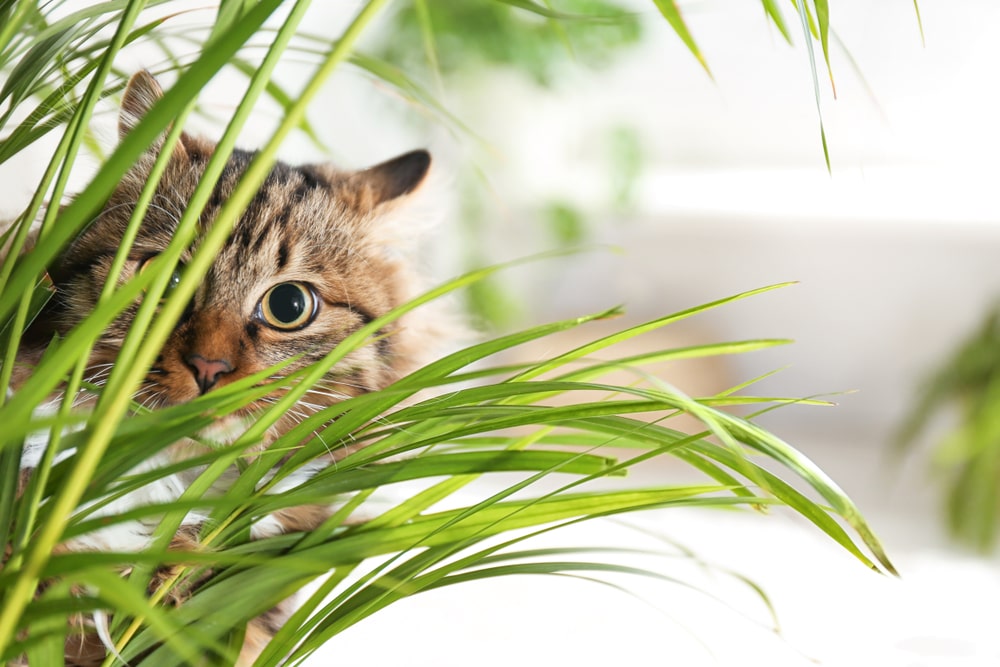This past Saturday, October 29th, was National Cat Day. National Cat Day was established in 2005 and is sponsored by The Animal Miracle Foundation. I’m lucky enough to have several cats. I’m also someone who has had many cats since I adopted my first when I was 15.
I also adopted my first plant when I was a teenager, so I have years of experience dealing with both greenery and kitties. Here is what I’ve learned:
Cats and Houseplants
- Do some research ahead of time to be sure you’re not bringing home a toxic plant.
- To keep them from nibbling on “safe” plants, get a mister bottle, and don’t be afraid to use it! When you bring a plant home, allow your cat to “investigate” but if they even look like they’re thinking of tasting it, give them a sharp spray from the bottle.
- Dust leaves liberally with cayenne pepper. Cats likely won’t even try to taste it—the smell will likely deter them. There is also a repellent spray called Hot Pepper Wax. A spritz of fresh lemon juice on the leaves can help, as can a product available at most pet stores called Bitter Apple. (Even if a plant is non-toxic, we don’t want chewed-on leaves.)
- There is a product called SSScat, which is a battery-operated canister that shoots a sharp spray of air when something triggers it. It covers about a three-foot square area so is fine indoors.
- To keep kitties from using the pots as a litter box, top the soil with small pine cones or gumballs. Easy, cheap, and effective!
Do not use most essential oils on plants—cats lack the necessary enzymes to metabolize these safely, and it can cause liver damage. As a matter of fact, don’t even use essential oil diffusers because they can collect on their fur and they’ll ingest it when they clean themselves.
Remember that a pet may still have an allergic reaction to non-toxic plants, so it’s best to discourage them from nibbling. Check your local pet store for other suitable repellents. Be sure to provide acceptable nibbles for cats, such as cat grass and catnip. If your pet has ingested a questionable plant or substance, seek professional help immediately.
My cats are now fairly well-behaved around plants—but if I bring one home with long, thin, grass-like foliage, all bets are off. So I place my palm on a stand that lifts it out of their reach and hang my spider plant in front of a window—out of their reach. Most palms are non-toxic but with their long-grassy looking foliage all bets are off as to whether or not they’ll eat them. Keep them out of reach or you’ll have a non-toxic but mostly chewed on plant.
By the way, most of these suggestions will help with dogs, too.
Animal Poison Control Center
The ASPCA’s Animal Poison Control Center is a hotline providing 24-hour-a-day, 7-day-a-week telephone assistance to veterinarians and animal owners. There is a consultation fee. Animal Poison Control Center 1-888-426-4435.

